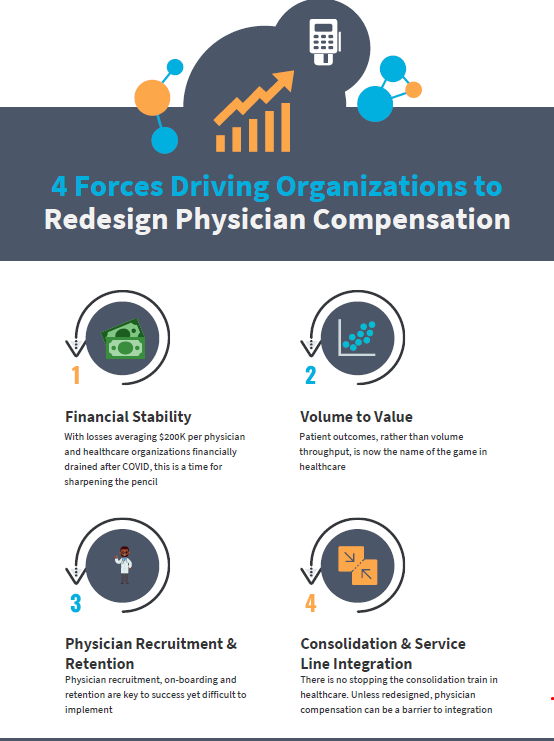4 Reasons to Reevaluate Your Physician Compensation Plan
As hospitals and health systems navigate a tumultuous economic environment following the COVID-19 outbreak, the need for standardized, value-based physician compensation plans has intensified.
- Even before the coronavirus pandemic, the median operating loss per health system-employed physician continues to be staggering. Many factors contribute to financial losses on employed physicians – costs related to physician onboarding and ramp-up, management, revenue cycle, and other operating costs (from administrative and billing support to technology and supply chain expenses); all of which impact the physician enterprise’s bottom line; but physician compensation is typically the largest line item on the physician enterprise P&L.
- The shift toward value-based payment, while slower than anticipated, continues to evolve. Even though 56 percent of healthcare organizations participate in value-based contracts, and only 34 percent of reimbursement is tied to value, the extent to which reimbursement is tied directly to volume continues to decline, and will likely continue in light of our experience during COVID-19.
- The rapid pace of consolidation has led to siloed health systems and in some cases disjointed service lines. Physician compensation can be a barrier to service line integration; without standardized compensation plans and the ability to tie physician compensation to quality and cost of care, aligning physician performance within integrated service lines, thereby reducing patient leakage, becomes a daunting task.
- Before the pandemic, nearly 44% of physicians reported they suffered from feelings of burnout. The American Medical Association expressed concern that rates of physician burnout are rising amid the coronavirus pandemic. Burnout can be dangerous and contagious and can impact retention and ultimately successful recruitment efforts.
With COVID-19 came severe disruption in elective procedures, primary care and specialty care volumes—a scenario no physician compensation plan could have anticipated. With operating losses per physician already on an upward trend, organizations must consider whether to act to address only the issues faced in 2020, or whether now is the time to restructure compensation to de-emphasize productivity measures and continue the evolution towards next generation value-based compensation models.
As organizations work through dealing with the issues resulting from the pandemic, taking into account the impact on each physician and the entire physician enterprise, they should also begin the necessary work of moving away from entirely productivity-based compensation models towards those that reward efforts at succeeding in a value-based environment.
